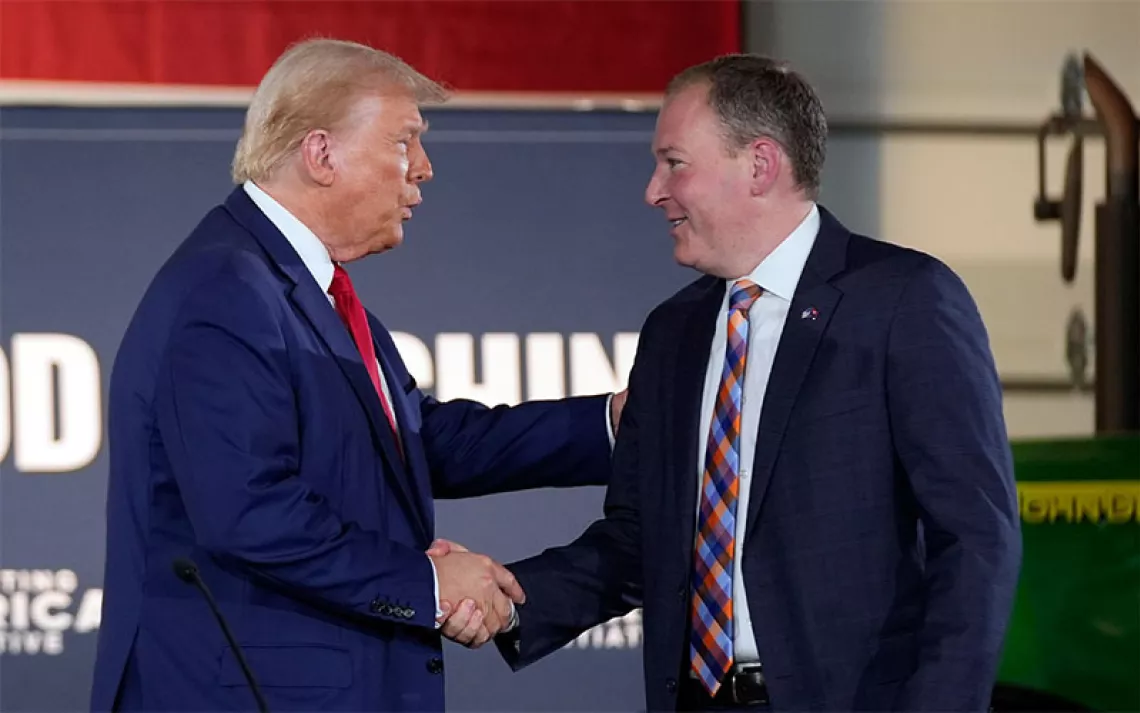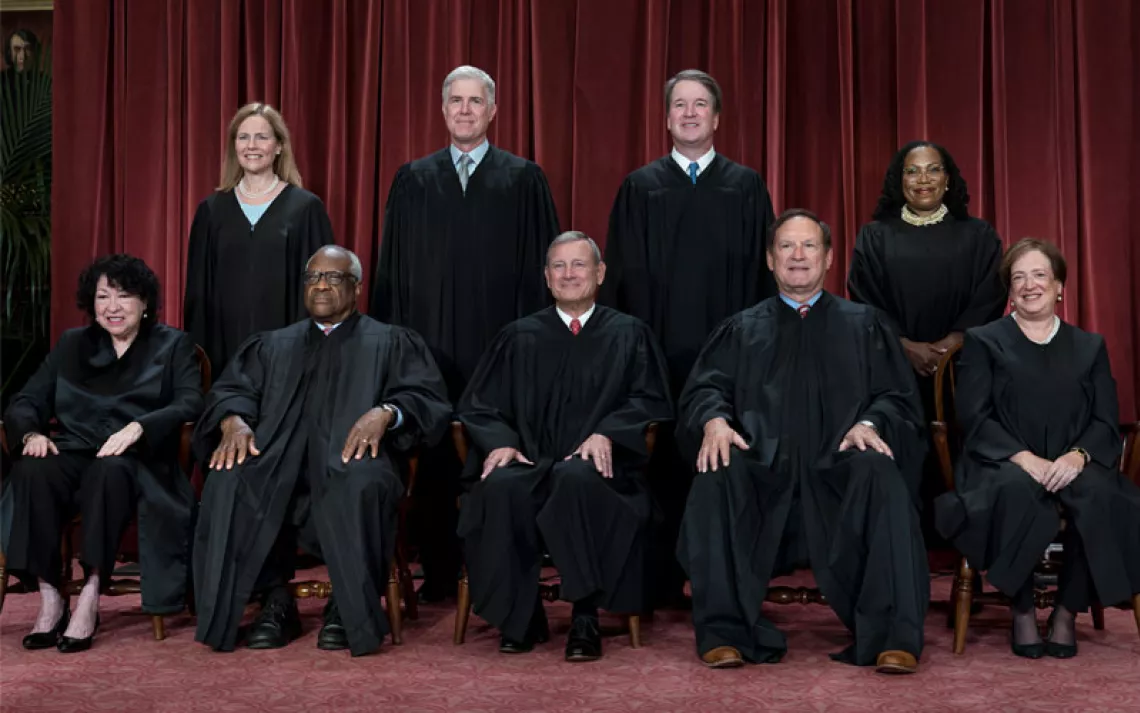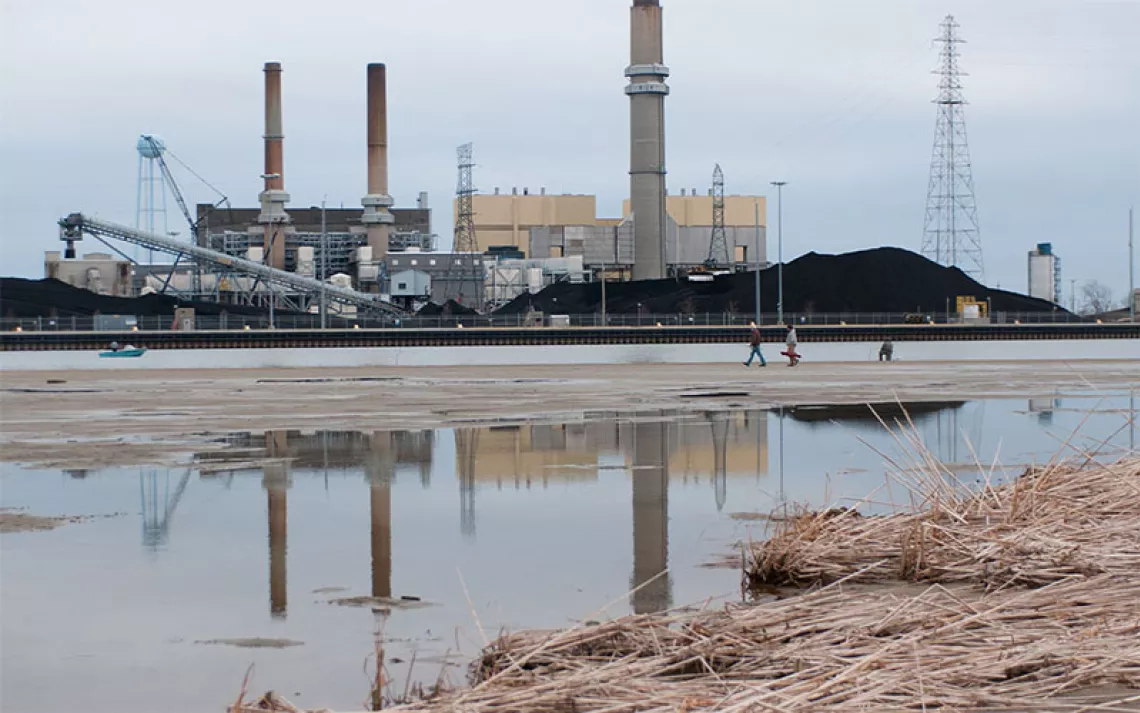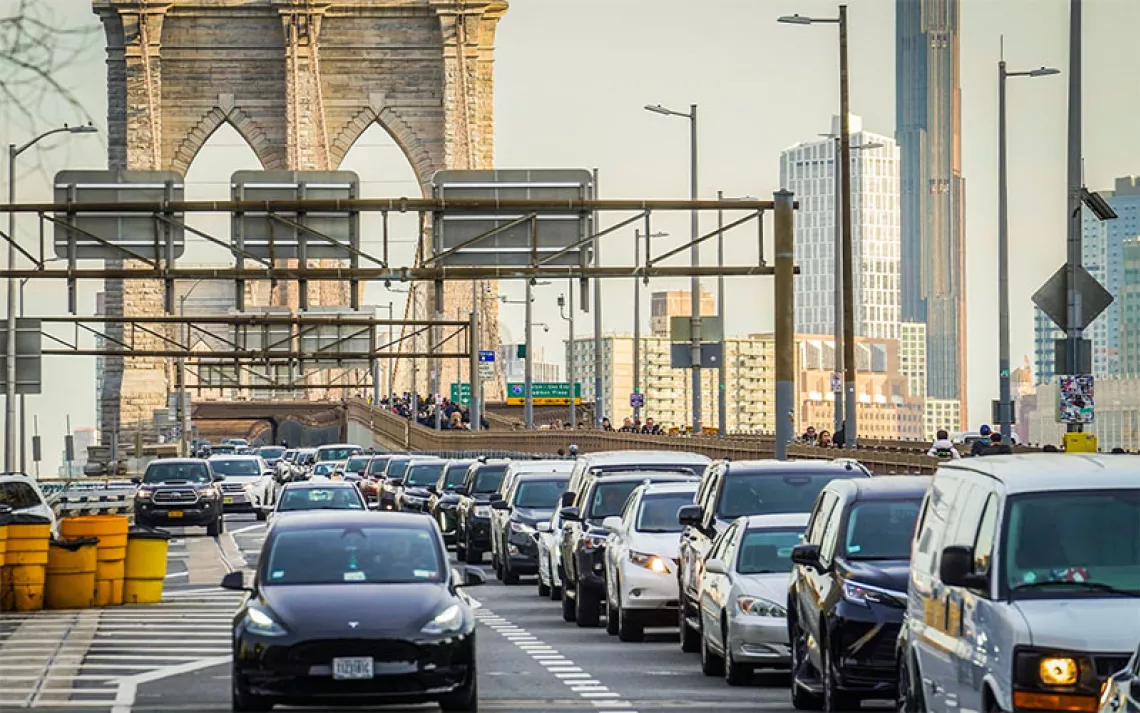Spring Awakening
The director of a new PBS documentary about Rachel Carson discusses the enduring conflict between technological innovation and the natural world
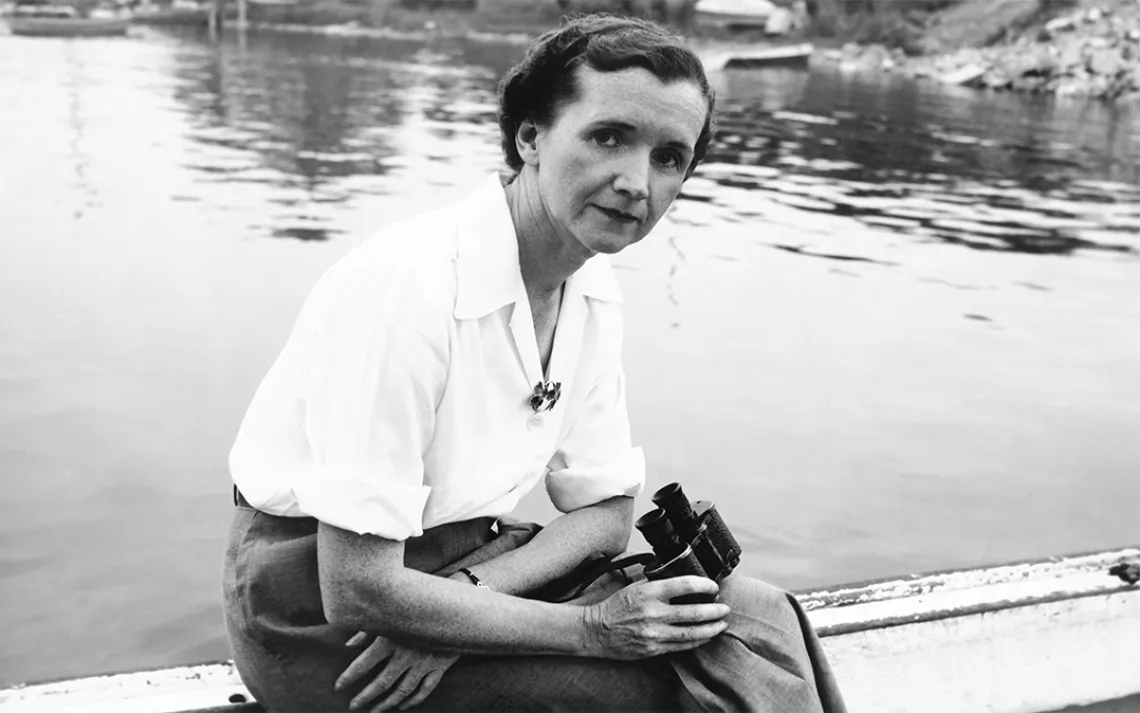
Rachel Carson | Courtesy of PBS
When Rachel Carson published her eloquent warning about the long-term dangers of pesticides in 1962, Silent Spring sparked an extraordinary national debate. The slim, chilling book—a true story on how DDT, then a common synthetic insecticide, harms wildlife, agriculture, domestic pets, and humans—made Carson the target of ruthless attacks from the chemical industry. Silent Spring also inspired President John F. Kennedy to launch an investigation into the public health consequences of pesticides, resulting in the first-ever laws designed to protect and preserve the environment.
Tonight, PBS’ American Experience series premieres Rachel Carson, a documentary about the woman who revolutionized our understanding of humans’ relationship with the natural world, arguably launching the global environmental movement. Drawing on Carson’s own works and letters, as well as candid conversations with those close to her, Rachel Carson delves into the private and public life of the soft-spoken Carson, voiced by actress and writer Mary-Louise Parker.
The film begins in a rural river town outside Pittsburgh, where Carson was born. Viewers become privy to her relationship with her mother, a fierce believer that children should study “nature, not books.” She eventually sold the family china to send her precocious daughter to college. While Carson was pursuing her doctorate in zoology at Johns Hopkins, her father and sister suddenly died, making her the family’s breadwinner. She dropped out and took a job as an information specialist with the U.S. Fish and Wildlife Service. During her many years penning press releases and reports for the government, Carson pored over scores of scientific studies on the unintended consequences of pesticide use, as well as reports on the destructive effects chemicals wreaked on fish, birds, and other wildlife.
After writing a trilogy about the science and history of the ocean, Carson grew determined to alert the public to the dangers of pesticides and began the work that would define her legacy. As soon as it was published, Silent Spring became an instant best seller. As Carson rose in prominence, she managed to conceal the fact from all but her closest friends that she was suffering from terminal cancer. By the time she died on April 14, 1964, at age 56, her work had transformed the nature of government regulation and, perhaps for the first time, masses of people considered their impact on the surrounding world. The grassroots environmental movement Carson helped inspire ultimately led to the creation of the EPA; in 1980, Jimmy Carter posthumously awarded Carson with the Presidential Medal of Freedom.
Carson left no autobiography. However, American Experience sheds compelling new light on the life and letters of the quiet, often solitary environmental pioneer. In 1953, Carson started summering on Southport Island, Maine, where she befriended a married neighbor, Dorothy Freeman. The two discovered a shared passion for the natural world and, for the rest of Carson’s life, corresponded on a nearly daily basis; their letters contain lyrical descriptions of seasonal changes, wildlife sightings, and the women’s own hopes and fears. Rachel Carson brings this relationship into focus, drawing not only on their letters, but also on insights from Freeman’s granddaughter, Martha.
Rachel Carson also highlights the complexity still inherent in the question of chemicals. In the 1960s, they provided solutions to famine and disease; no one had yet considered that there was a price to be paid for technology. Because the question resonates just as loudly today, Sierra spoke with Rachel Carson director Michelle Ferrari—the writer and director of several critically acclaimed historical documentaries—about the process of bringing Rachel Carson back to life and about her mounting legacy.
Sierra: Why this film now?
Ferrari: I’ve been making historical films for a long time, and I don’t think I’ve ever encountered a subject whose perspective is so relative to the world we’re living in today. Carson’s story is an origin story—an origin story about our ongoing national, and at this point global, debate over the benefits and hazards of technology. Carson started that conversation, and we’ve continued to have it ever since. We may not be talking about DDT today, but we are talking about fracking and climate change, so her message seemed really resonant right now.
Tell us about your research process.
I work with a pretty small team—a producer and a coproducer—and we began as we always do, reading a lot of books by and about Rachel Carson. We also made a trip up to Maine in the summer of 2015 to spend some time at the place that Carson loved best in the world, where her summer cottage was. That’s when we began what was a yearlong process of finding the visual materials for the film.
Had you previously read Carson’s books?
I read Silent Spring in high school but didn’t even remember much of it. One of our interviewees pointed out that there’s this donut hole in the population—people over 60 know who Rachel Carson is, and people who are in school now know who she is, but people of my generation kind of don’t. Her books about the ocean [1941’s Under the Sea Wind, 1951’s The Sea Around Us, and 1955’s The Edge of the Sea] are actually much more entertaining reads than Silent Spring, which is quite dark. But the thrill of the project was through the lens of hindsight—in seeing and feeling that the overall argument lay so neatly on top of our current dilemmas. In some ways, you’d expect Silent Spring to feel dusty, but you know, if you did a find-and-replace and replaced “DDT” with “climate change,” you’d know the symmetries are impossible to escape.
How did you scout your sources for this documentary?
It’s like when you do research on anything—one thing leads to another. First call I made was to Bill Souter, who wrote the most recently published biography of Carson [2013’s On a Farther Shore: The Life and Legacy of Rachel Carson, Author of Silent Spring]. He was very excited to participate and told me who to talk to. Martha and Roger [Christie, son of Rachel Carson’s niece Marjorie; Carson adopted Roger at age five after Marjorie’s sudden death] were among the first people he suggested to me.
Tell us about the decision to use so much of Carson’s and Freeman’s correspondence to tell Carson’s story. Was there an inherent message about Carson’s sexuality?
Their relationship was arguably the single most important one in her life, next to her mother, but I was very reluctant to put a label on it. I think there will be some portions of the audience who are disappointed by that, but I didn’t want to name Carson something that she never labeled herself.
Carson was such a controversial figure—have you experienced any negative backlash for your portrayal?
I’m already anticipating the letters we’re going to get. Carson continues to be controversial among people who don’t like environmental regulation. If you Google-search for her, you find entire websites dedicated to besmirching her name—sites referring to her as a killer. She’s a symbol of environmental regulation in this country, and people who oppose it dislike her immensely.
What was the most surprising thing you learned about Carson?
I found her endlessly interesting—a fascinating person. I was particularly impressed with the degree of her solitude, and the way in which she really poured her life into her work. She really had a strong work ethic, and I was struck by the great deal of care she had for what she was doing—her desire for perfection. As an artist, I was really taken with that. She was often described as gentle, but in her way, I found her really quite fierce.
Tell me about the decision to have Mary-Louise Parker voice Carson.
It had a lot to do with the timbre of Parker’s voice—its seriousness and thoughtfulness. Rachel Carson never would have made it as a voice actor—she had this flat, mid-Atlantic voice—so we weren’t looking for someone who would necessarily sound like her. I love Mary-Louise’s work, and she’s really smart and cares a lot about the issues in the film, so she seemed like a natural choice.
The questions of scientific/technological innovation versus the natural world are, as you mentioned, particularly prescient right now. What do you think viewers’ takeaway will be?
I really hope that it helps people contextualize and better understand the conversation we’re having right now. Frequently, when the Rachel Carson story is told—not that it’s told that often—it’s presented as a David and Goliath story. But, that didn’t interest me, because there’s not as much conflict in that—there’s always a good guy and a bad guy, and you know how it’s going to turn out. To me, the perspective of the proponents of pesticides was important to understand, because yes, there’s a profit motive, but that’s not all there is. What you really have in Carson’s story is a huge clash of world views, and a clash of opinions about what human beings’ role is in respect to the natural world: Are we meant to master it? Do we trust that we’ll be able to solve any problem we create with yet more technology? Or, like Carson, do we advise caution and approach the world more carefully? I think most human beings feel conflicted about these issues—we want the birds, but we want our cars, too. At the end of the film, Naomi Oreskes [professor of the history of science at Harvard] says, “[Carson] started a conversation, and it’s one we still don’t know how to have in an appropriate way today.” I would love it if the film did just that—helped us to have this conversation in a more appropriate way.
Rachel Carson premieres on PBS American Experience on Tuesday, January 24, 8 to 10 P.M. ET. Check local listings here, and view an exclusive preview of Rachel Carson here.
 The Magazine of The Sierra Club
The Magazine of The Sierra Club
